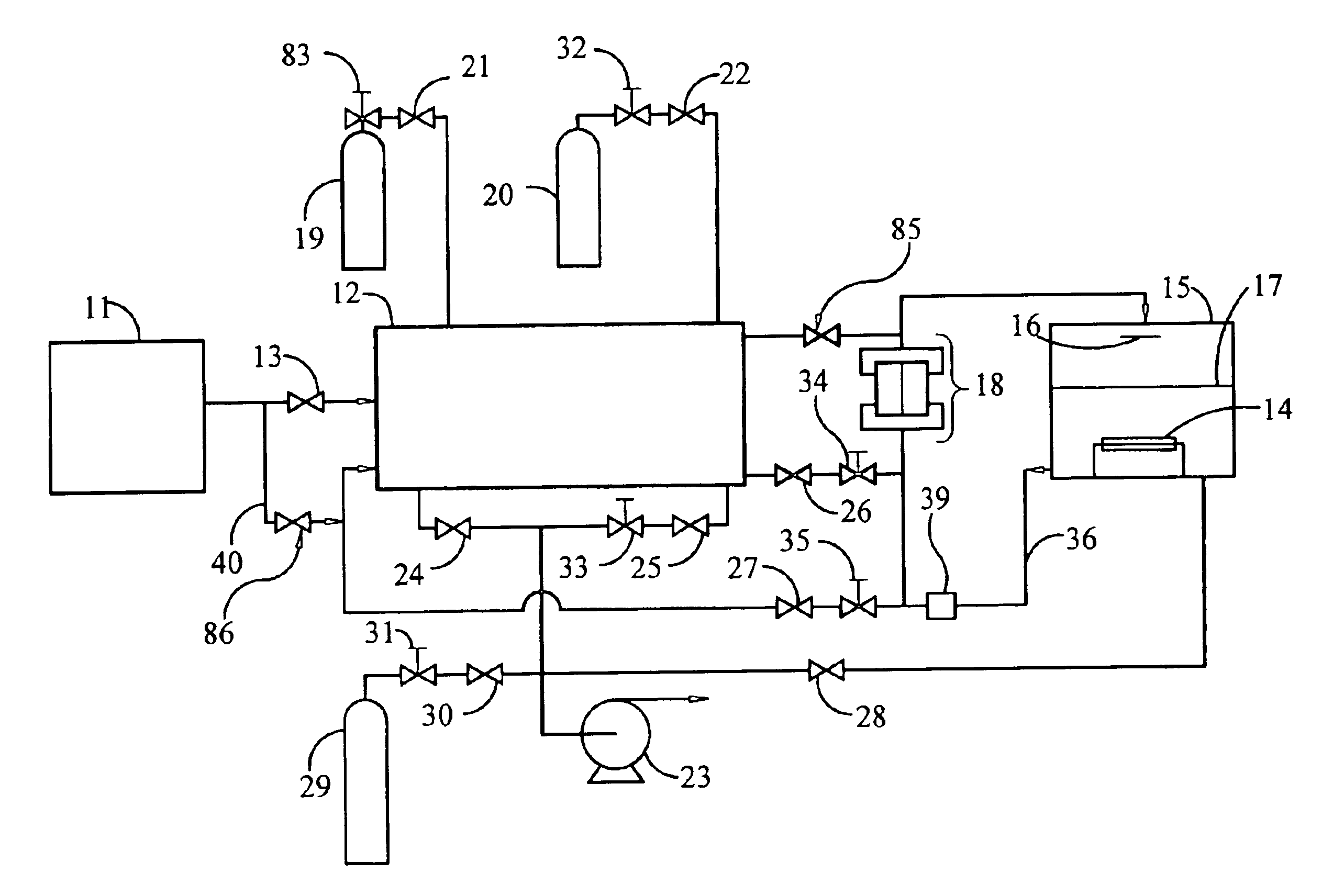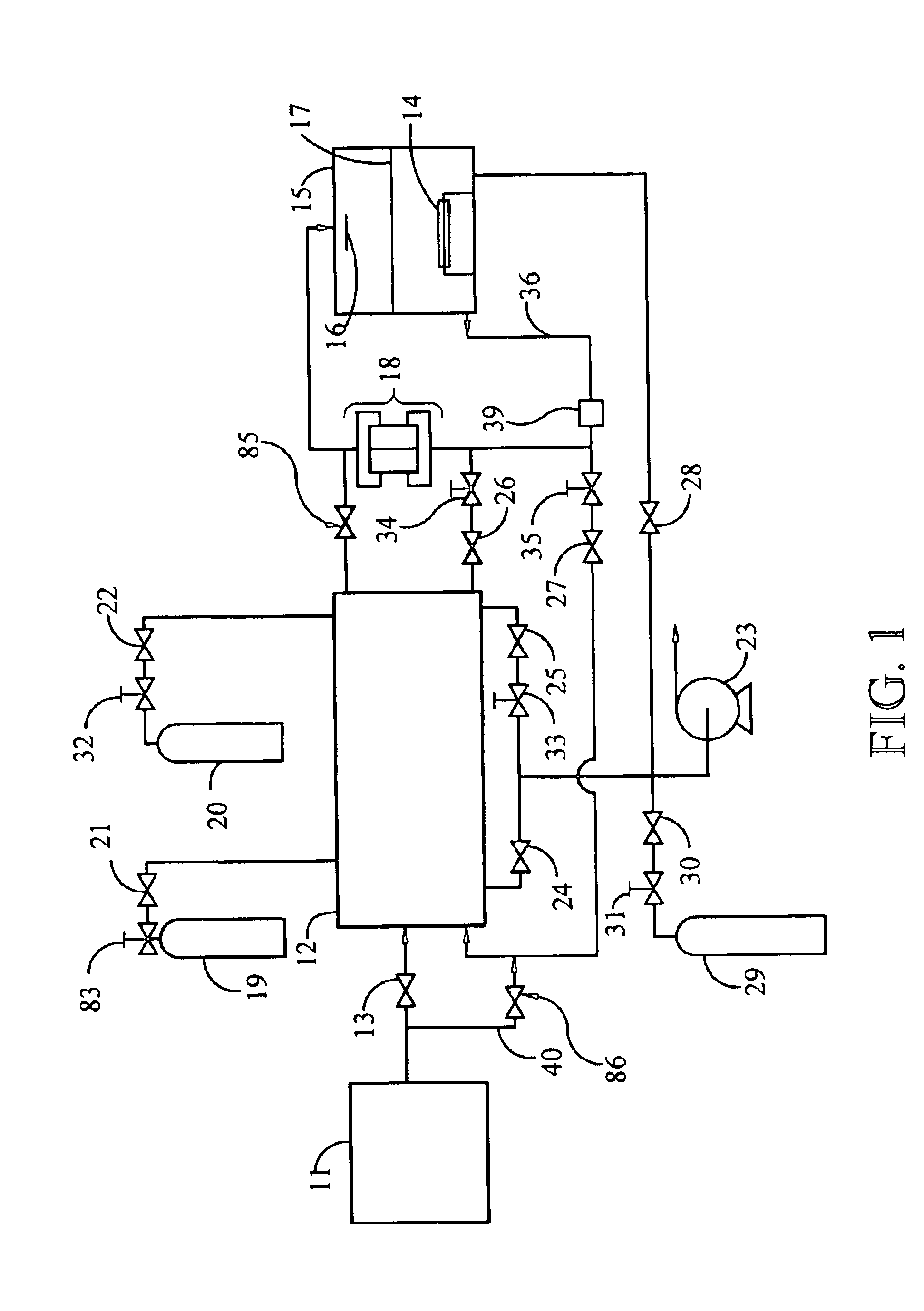Apparatus and method for flow of process gas in an ultra-clean environment
a technology of process gas and apparatus, applied in the direction of chemistry apparatus and processes, microstructural devices, coatings, etc., can solve the problems of unrecirculation, achieve high controllable flow rate, reduce, minimize or even eliminate the occurrence of localized areas, improve process gas efficiency and process efficiency
- Summary
- Abstract
- Description
- Claims
- Application Information
AI Technical Summary
Benefits of technology
Problems solved by technology
Method used
Image
Examples
example
[0066]For etching a 6″ glass substrate with MEMS devices, typical apparatus and process parameters include: double source chamber design with 11a at 28 C, 11b at 31 C and intermediate connector piece at 35 C. Expansion chamber 12 and etch chamber 15 at 23 C. In step 6 above, both chambers 12 and 15 are filled with a mixture of 45 T Nitrogen (N2) and 450 T Helium (He); total gas pressure is 495 T. In step 8, the chamber 12 is filled with XeF2 gas above 4.2 T. In step 9, the XeF2 gas in chamber 12 is reduced to 4 T for use in the process. In step 10, chamber 12 receives 47 T of Nitrogen (N2) and 470 T of Helium (He); total gas pressure in chamber 12 at the end of step 10 is 521 T.
[0067]Sacrificial silicon layers that can be removed using the apparatus and method of this invention may be layers of crystalline silicon, amorphous silicon, partially crystalline silicon, crystalline silicon of multiple crystal sizes, polysilicon in general, and silicon doped with such dopants as arsenic, p...
PUM
| Property | Measurement | Unit |
|---|---|---|
| size | aaaaa | aaaaa |
| size | aaaaa | aaaaa |
| sublimation pressure | aaaaa | aaaaa |
Abstract
Description
Claims
Application Information
 Login to View More
Login to View More - R&D
- Intellectual Property
- Life Sciences
- Materials
- Tech Scout
- Unparalleled Data Quality
- Higher Quality Content
- 60% Fewer Hallucinations
Browse by: Latest US Patents, China's latest patents, Technical Efficacy Thesaurus, Application Domain, Technology Topic, Popular Technical Reports.
© 2025 PatSnap. All rights reserved.Legal|Privacy policy|Modern Slavery Act Transparency Statement|Sitemap|About US| Contact US: help@patsnap.com



